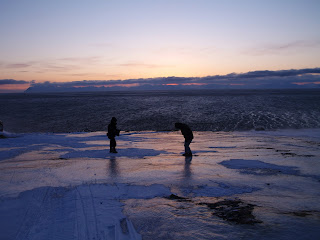Integrity 2010, NATURE, is pleased to announce a new context of making smart textiles useful to improve human conditions in highly urbanized areas while preserving traditional values. We are an interdisciplinary group from the Swedish School of Textiles, members Shufei Wang, Sarah Torkelsson, Jeannine Han, Marina Rehbein.
The formation of community projects in rural areas in Uganda such as womens handicraft groups is used as a role model to create a community textile solar water heating and cleaning system that makes use of the common rain falls in Uganda.
The system is based on three processes, harvesting rain water, storing it and heating it with the help the sunlight. Several parameters influencing these processes need to be taken into consideration. Height, surface, structure, weight, time, temperature, volume and gravity.
The flexibility of the textile material makes it possible to meet the demand of a highly densed urban area that quickly develops in an architectual unplanned way such as shanty towns of Kampala.
The system is based on urbanisation problems and the strong culture in african societies to build constructions which emphazise the individual and the community.













